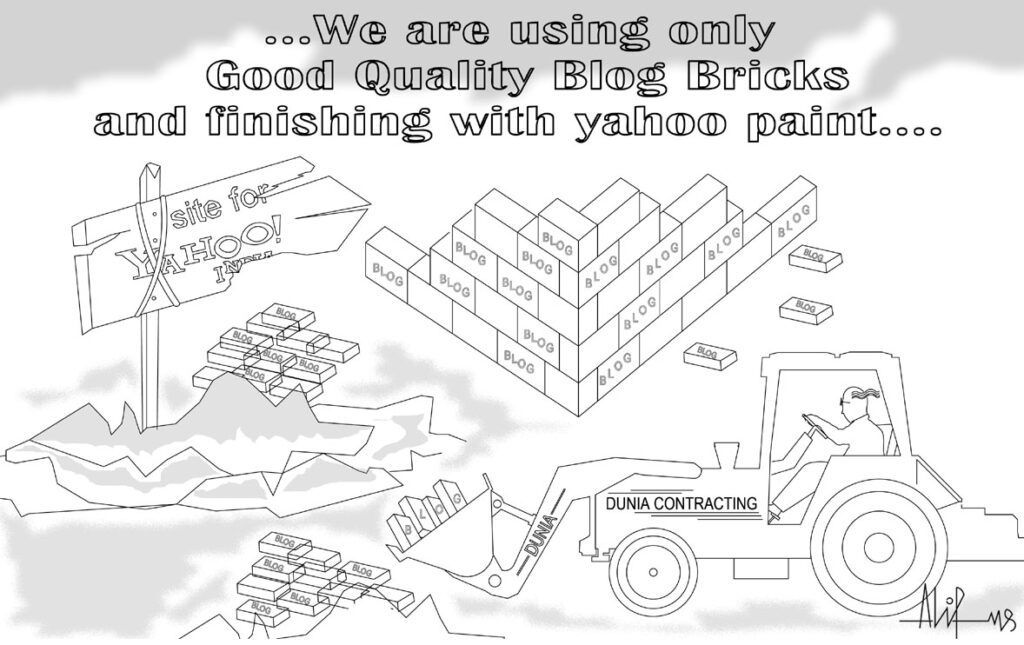Yahoo India is in the middle of a controversy over plagiarism of contents. Some contents published by Yahoo Malayalam were a straight lift from a blog. Bloggers are up in arms. Reportedly, Yahoo has washed its hands citing that the content was provided by its content partner, Webdunia.com.
Blogs protesting against Yahoo are aplenty. (In a thank you note published on her blog, the author of the said article has published a list of over 140 blogs that condemned Yahoo’s action). Many vernacular bloggers from Tamil, Hindi have joined the protest. Complimenting the verses was a dose of cartoons. (Seen here is a cartoon by Mr. Abdul Aleef from his blog). Bloggers also observed March 5 as a protest day.

Sooner or later, the dust will settle. Yahoo perhaps will do some damage control. Bloggers might return home with a new sense of togetherness and identity.
But this incident brings forth two points worth noting.
First is about the change in who is fighting whom. Plagiarism controversies in writing/literature are not new. We have heard enough of it. And we knew the players of the game. Authors vs authors, authors vs publishers, or publishers vs publishers. But, here the players are different. It is a publisher vs the blogging community at large. It is no longer one author. The hundreds of blogs and thousands of comments/replies and solidarity declarations shared the same passion and anger. The power equations in the media landscape are surely getting altered.
Second is that the struggle for content is real. Quality content is scarce. Especially, if it is not a niche vertical. Contents on general information portals have nothing great about them. Everyone has the same set of categories, except some difference in the naming convention. And most of them are syndicated, where articles are measured in words & letters and delivered before deadline. All the general information portals in India, whether it is Rediff, Yahoo, MSN or Sify, have grown around e-mail usage. Unlike offline newspapers’ online versions, these portals have no editorial identity of their own. And quality suffers.
The dynamics of consumers’ interaction with media is changing. So are expectations. And for media, challenging times are ahead.